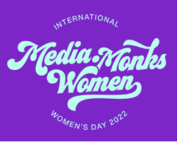Communicating in the age of Coronavirus Covid-19
Covid-19 has the potential to cause widespread disruption to the business and social landscape in Australia.
I’ve been asked to write about Covid-19 from a social networking context a few times, but every time I try to get something down, it feels disingenuous. I also don’t want to contribute to the huge volume of misinformation out there, making it harder for organisations like the Department of Health and the WHO getting their messages out.
But there’s the issue.
They aren’t getting messages out, at least not in an effective way to avoid panic buying and to see a rise in misinformation.
Why is it that misinformation becomes so prevalent during times like this?
Misinformation has been around for centuries.
The Athenian general Themistocles used it in 480BCE at the Battle of Salamis to defeat Xerxes’ much larger Persian Navy, Goebbels helped build the Third Reich with it in the 1930s and the oil industry has been using it to counter peer-reviewed, accepted, climate science since the 1970s.
But now, we have so many different ways to create and distribute content, that misinformation is easy to create and fast to publish and distribute. Social networks play a huge part in this distribution, but the content creation, the motive behind the misinformation, comes from another place.
If you’re not communicating, someone will fill that vacuum.
I had a meeting recently with the marketing team at a construction company. By their own admission, the business was shy about communicating, to the extent that media releases were rare.
The concern that they had was that no one was talking about or to them on social networks, so they were unable to gauge what the sentiment was about them. A bit of digging around found some Facebook groups set up to advocate against their developments and a degree of negative sentiment towards the brand around accidents and a lack of community consultation.
Often we find that clients can see this kind of negative commentary as an attack on their brand and in some instances can even label the comments as trolling.
The truth is that by adopting radio silence, the company has left people (customers and other interested parties) that really want to engage with their brand with no way to do so. The Facebook groups only popped up after no other response or gateway was offered from the brand. Some of the information in this group was right, some of it was wrong. I don’t think it was maliciously wrong, but with no input from the brand, a vacuum was created and the audience was left to make up its own mind.
We’re seeing the same thing with the Covid-19 outbreak.
People are, rightly, concerned and want to know what is happening and how this virus will affect them. To date, we’ve been getting conflicting information, and the information that we do get is out-of-date very quickly.
When there is confusion, or a lack of information, other voices will rise up and be heard, even if they are not an authority on the issue. We’ve seen people claim that drinking bleach, or taking illicit drugs, will cure coronaviruses.
How should we be communicating about Covid-19?
We recently wrote a couple of blog posts about communicating in a crisis, so take a look at these here and here.
This is a very fluid situation, and will change quickly. Your communications strategy needs to be agile enough to anticipate and respond to the needs of your audience. At its core though, maintain the mantra of accuracy, relevance and currency.
Setup a Landing Page
This should be the central hub of all information that your audience needs. It should be built for mobile and render quickly. Within the landing page, you should:
- List all articles that you have that relate to your stakeholders, in order of currency. Use excerpts to display a range of articles.
- Have a mechanism for the stakeholders to contact you, such as phone numbers, social networks, comments or forms. Make sure you respond quickly.
- Have a link to a privacy policy and GDPR statement.
- Make sure the audience can find the content they need. You may have different sections of the page, or even different pages altogether, for employees and customers.
Make sure your content tells the audience how the situation is currently affecting your organisation and what the flow on affect them will be. Be transparent and decisive. Learn the lessons from the Melbourne Grand Prix, not leave the audience guessing.
Use Journeys
Journeys let you automate messages to go to the right people at the right time. Your audience may have a number of different requirements, or the flow on effect may impact them at different times. This Twitter thread gives a great example of how this works offline, using floods.
Anticipate this and ensure you are giving them the best support through journeys.
- Collect data through your landing page
- Make sure that your communication through the medium that the audience prefers, such as email, phone, text message or social.
- Update your journeys as new information comes to light
- Keep the rest of the organisation across what is going out to the audience and encourage them to contribute
- Push the audience back to the Landing Page at all steps in the journey to reinforce that behaviour.
Use Ads
A look at google trends shows there are a lot of different searches going on, with people searching for information. Chances are, your content won’t be indexed as quickly as you need, and may not display on in search results in a timely manner.
Use advertising, especially Google Ads, to present your content in front of the audience when they search. Your keywords should be specific to your organisation and the message you want to deliver, so the impact on advertising budget should be minimal.
Advertising on Social Networks would be recommended, too.
Again, push the audience back to the Landing Page.
Social Listening
Finally, use social listening to gauge how your content is being used, what the reaction to that content is and what other questions are raised by the audience.
Use these learning to create and improve content on the Landing Page.
About the Author
Derek Harris

Derek is the Social Practice Lead at Destined. A leading voice in Social Communication across APAC, Derek helps clients to leverage Salesforce Marketing Cloud and Social Studio to enhance their brand effectiveness and build social listening strategies.
Recent Posts
International Women’s Day
International Women’s Day International Women’s Day is an opportunity to celebrate successes women are achieving in the workplace. To mark International Women’s Day 2022, we asked our women in tech what they most [...]




